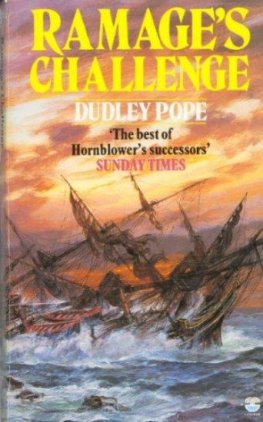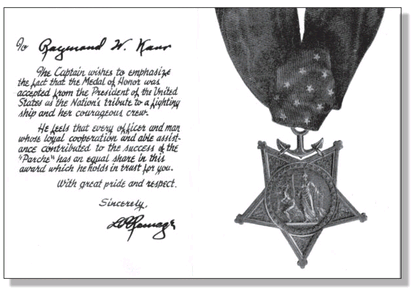Table of Contents
OTHER BOOKS BY STEPHEN L. MOORE
Relic Quest: A Guide to Responsible Relic Recovery Techniques with Metal Detectors.
Garland, TX: RAM Books, 2011.
Savage Frontier: Rangers, Riflemen, and Indian Wars in Texas. Volume IV: 18421845.
Denton: University of North Texas Press, 2010.
European Metal Detecting Guide: Techniques, Tips and Treasures.
Garland, TX: RAM Books, 2009.
Presumed Lost: The Incredible Ordeal of Americas Submarine Veteran
POWs of World War II.Annapolis, MD: Naval Institute Press, 2009.
Last Stand of the Texas Cherokees: Chief Bowles and the 1839 Cherokee War in Texas.
Garland, TX: RAM Books, 2009.
War of the Wolf: Texas Memorial Submarine, World War IIs Famous USS Seawolf.
Dallas, TX: Atriad Press, 2008.
Savage Frontier: Rangers, Riflemen, and Indian Wars in Texas. Volume III: 18401841.
Denton: University of North Texas Press, 2007.
Spadefish: On Patrol With a Top-Scoring World War II Submarine. Dallas, TX: Atriad
Press, 2006.
Savage Frontier: Rangers, Riflemen, and Indian Wars in Texas. Volume II: 18381839.
Denton: University of North Texas Press, 2006.
Eighteen Minutes: The Battle of San Jacinto and the Texas Independence Campaign.
Plano, TX: Republic of Texas Press, 2004.
Savage Frontier: Rangers, Riflemen, and Indian Wars in Texas. Volume I: 18351837.
Plano, TX: Republic of Texas Press, 2002.
Taming Texas: Captain William T. Sadlers Lone Star Service.
Austin, TX: State House Press, 2000.
The Buzzard Brigade: Torpedo Squadron Ten at War. With William J. Shinneman and
Robert W. Gruebel. Missoula, MT: Pictorial Histories Publishing, 1996.
For more information, visit www.stephenlmoore.com
Cdr. Lawson P. Ramage, upon being awarded the Congressional Medal of Honor for Parches second war patrol, created this certificate for each man who was on board his submarine. Ramage wrote that he felt every officer and man whose loyal cooperation and able assistance contributed to the success of the Parche has an equal share in this award, which he held in trust for them. Image courtesy of Ray Karr.
Foreword
History tells us that the Japanese surprise attack on the United States in December 1941 was a grave miscalculation for Japan. Clearly the attack amassed much damage and death at Pearl Harbor, but the sneak attacks limited objectives resulted in little damage to the ship repair facilities, no damage to the above-ground fuel tanks, and little damage to the Submarine Base. This series of non-events led to wartime scenarios not expected in prewar planning.
The attack certainly awakened a sleeping giant; it enabled the former scouting force of submarines to take on a completely new role. Immediately after the commencement of hostilities our submarines were ordered to begin unsupported operations against the enemy. As the commander of the U.S. Pacific Fleet, Adm. Chester W. Nimitz stated: It was to the Submarine Force that I looked to carry the load until our great industrial activity could produce the weapons we so surely needed to carry the war to the enemy.
The Submarine Force accorded itself proudly during the three year, eight month duration of the war. Japan entered the war with 6 million tons of merchant shipping. At the conclusion of hostilities only 300,000 tons of merchant shipping remained. The American Submarine Force was responsible for sinking 5 million tons (1,178 ships) of Japanese shipping as well as 600,000 tons (214 ships) of naval vessels. These losses strangled Japan. Its dependence on oil from the south and the loss of its tankers sealed its fate by the end of 1943.
The achievements above are more noteworthy when one considers that the United States Submarine Force consisted of less than 2 percent of the U.S. Navys personnel. As important as the Submarine Force accomplishments are, it is also necessary to review our submarine losses. Fifty-two out of 228 American submarines were lost in the waralmost one in five!
The thumbnail sketch that Ive drawn here provides a short history of the impact of the American Submarine Force on hostilities with Japan in World War II. The ability to achieve such success in less than four years is a tribute to the men who manned and supported our submarines. In order to truly understand the overall achievements of the Force one must know the men who volunteered for submarine duty.
Battle Surface!tells their story in their words. USS Parche and its skipper, Cdr. Red Ramage, were the epitome of operational success during the war. Battle Surface! clearly points to the highs and lows a commanding officer of a naval vessel experiences and the reaction of individual crew members to these swings in attitude. Battle Surface! describes the lack of physiological and psychological privacy on our submarines and how these deficits enabled camaraderie to flourish.
I was lucky to have known Red Ramage and many of his crew members, including Frank Allcorn, his torpedo officer. One encounter with any of these fine sailors allows the listener to truly understand how the American Submarine Force accomplished so much in World War II. Battle Surface!is a must-read for all who want to understand what the Greatest Generation gave us in World War II.
Albert H. Konetzni Jr., Vice Admiral, USN (Ret.)
Former Commander, United States Submarine Force,
U.S. Pacific Fleet
Preface
AT AGE 92, BOB ERWIN LOOKS healthier than many people Ive seen who are decades his junior. Sporting a dark tan from playing golf five days a week, he is eager to look over the latest revisions to the manuscript. The walls of his southern Florida apartment are adorned with evidence of his past handiwork as an officer of the United States Submarine Service of World War IIa combat insignia pin representing four successful war patrols, a copy of his boats Presidential Unit Citation, the Silver Star, and the Bronze Star.
Bob produces photo albums, patrol reports, and various memorabilia from days on board the USS Parche. As we review the details of various attacks made by his submarine, he is quick to clarify the fine points and steer credit where credit is due.
More than 65 years have passed since his warship entered the annals of submarine history on 31 July 1944, and yet he remembers the fine details as if it happened last year. Bob relates how he was hunched over his little plotting table in Parches conning tower that night, penciling in ever twist and turn his boat made. Above him on the bridge stood Cdr. Lawson Paterson Ramage, a resilient warrior who was in his element that day.
Known to his contemporaries as Red for his hair color, Ramage coolly conned his boat in, around, and through the large Japanese convoy MI-11 during the predawn hours of 31 July with little regard for his own safety. In the span of a half hour, he dispatched 19 of his submarines two dozen torpedoes against tankers and transports with deadly effect. Twice











